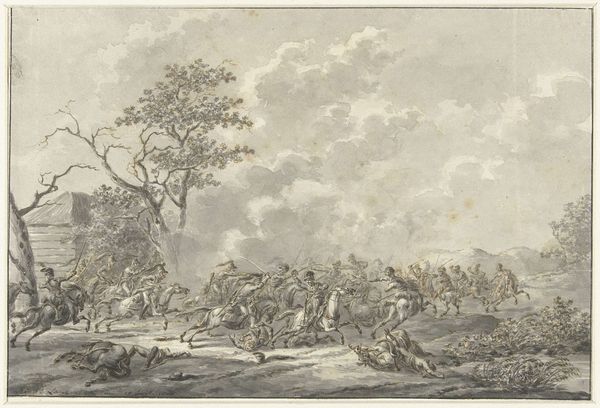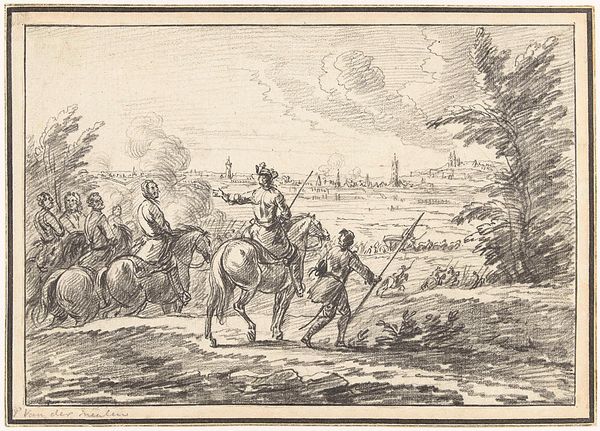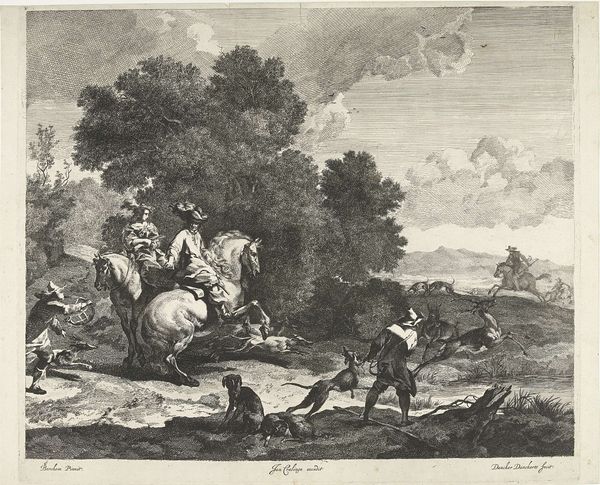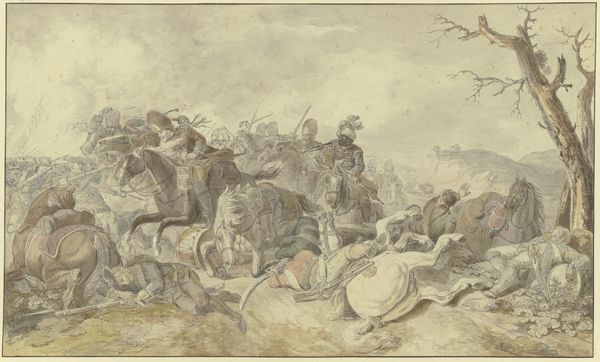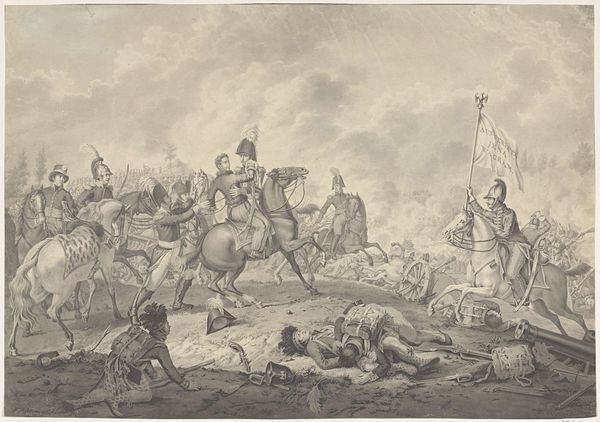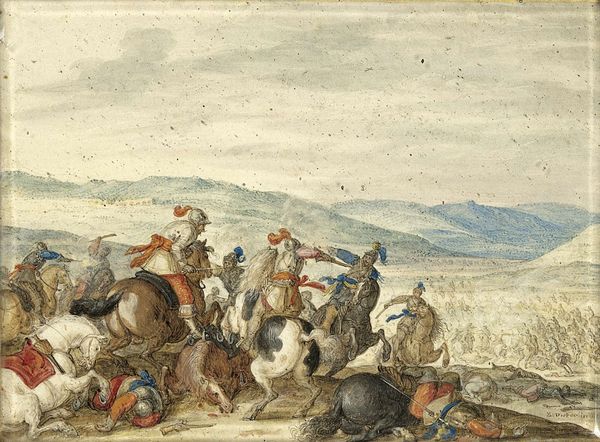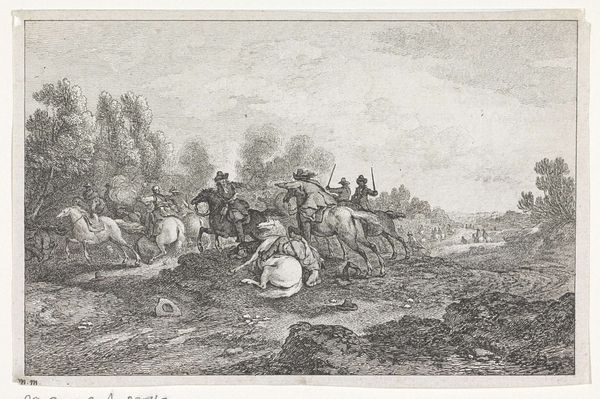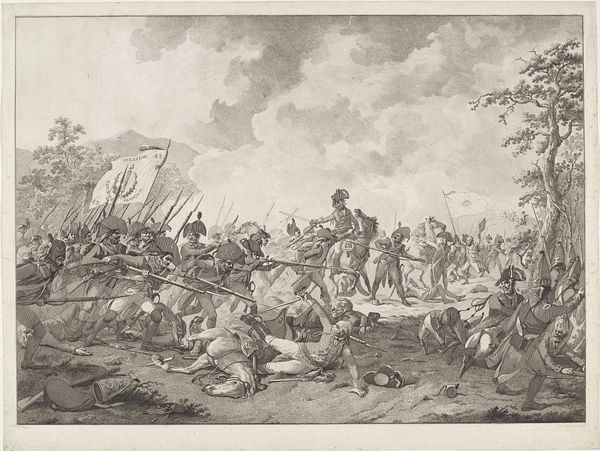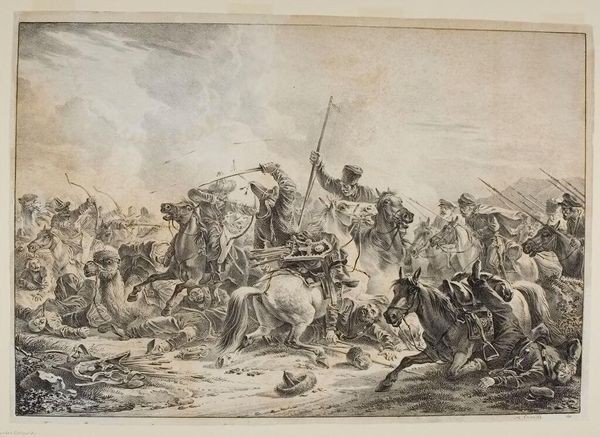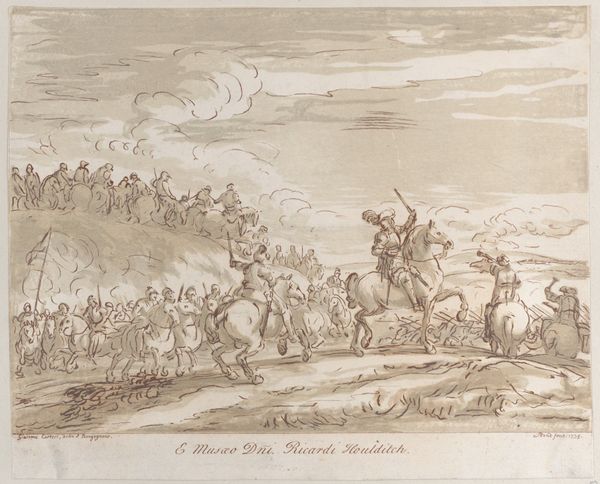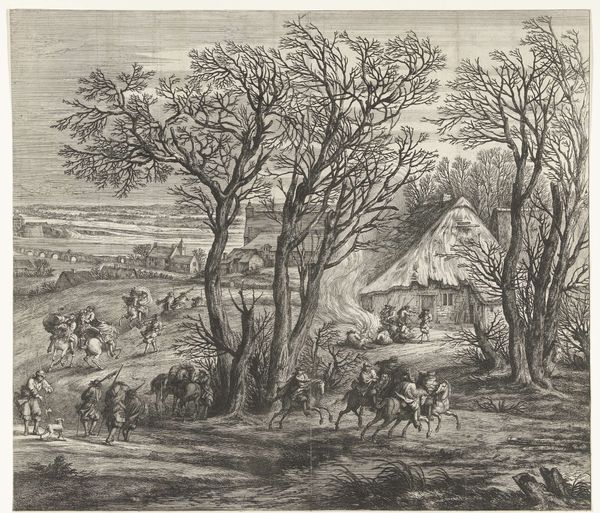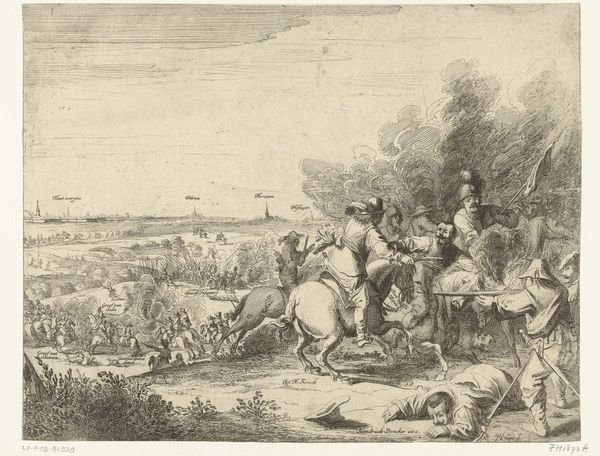
Aanval tussen Kozakken van de Krim en Franse Rijdende Artillerie 1817
0:00
0:00
painting, watercolor
#
painting
#
landscape
#
watercolor
#
romanticism
#
watercolour illustration
#
genre-painting
#
history-painting
Dimensions: height 213 mm, width 310 mm
Copyright: Rijks Museum: Open Domain
Curator: Here we have "Aanval tussen Kozakken van de Krim en Franse Rijdende Artillerie," or "Attack between Cossacks of the Crimea and French Horse Artillery," painted by Jan Anthonie Langendijk Dzn around 1817. It's currently held at the Rijksmuseum. Editor: My first impression is how dynamic the watercolor illustration is, almost theatrical. It gives off a hazy, chaotic energy. Curator: Absolutely. Langendijk was known for his depictions of military scenes. He presents these confrontations within these sort of grand historical narratives. This work offers a glimpse into the Romantic era’s fascination with warfare. It wasn’t just about documentation. Editor: I’m struck by how the labor of this piece affects how it circulates. Someone mixed pigments, another prepared the paper. It speaks to this historical context where artistic labor was less separated from the socio-political framework of these conflicts. The actual making and movement of the pieces is part of its story, the commodification, in the art market of the period as well as the content of violence in that same market. Curator: That’s a great point, really highlighting the means of production and embedding within it this social fabric that produced war. There is some tension of the heroic element to it. I see that heroic element somewhat mitigated through Langendijk’s careful eye for detail, as much an observer than an author. What do you think? Editor: I think it depends on whose eye you’re seeing this violence from, for whom this romanticized violence and warfare would apply. Someone made these dyes with purpose, whether for aesthetic pleasure or war documentation, for an art consumer and patron. Its purpose relies on the labor invested and its later viewing public. Curator: I think it invites questions about the construction of national identity, then and now, within art itself. Editor: Right. Considering the material and processes involved is crucial. The painting and those portrayed benefit one another on each side of the easel and battlefield, informing how this conflict can be both created and later consumed. Curator: Precisely, It really does allow a multi-faceted look at this historical moment, one deeply embedded in this artistic output. Editor: Thanks for unpacking the role the socio-economic landscape plays with war imagery.
Comments
No comments
Be the first to comment and join the conversation on the ultimate creative platform.

